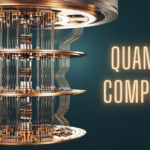
AI in Film – Achieving Creative Excellence
In recent months, there has been a growing debate in the scientific community about artificially intelligent androids performing in film and entertainment industry projects. These discussions have also touched upon concerns about artistic biases that may be embedded in the very fabric of the film itself. Concerns explored here range from the idea that the information used to train artificial algorithms reflect certain inherent biases (racial, gender, or cultural) that, when left unchecked, could shape popular movie genre and even ideas of creativity and diversity.
In this article, we will take a closer look at three recent examples of Hollywood’s use of AIs in film projects. These three cases study the use of AIs in creative production, development, and greenlighting stage processes. All three are noteworthy because they highlight different facets of AIs and the challenges faced by designers and developers as they fine tune such systems. We will also examine the potential implications of such advancements in AIs might have for ethical designers and developers.
The first case involves the development of facial recognition technology in digital image editing applications. In this application, images are labeled according to their facial appearances. Based on these labeled images, producers and directors can to pre-program facial characteristics of their actors, artists, and actresses. This greenlighting stage is oftentimes associated with deep processing, which focuses on large tasks such as identifying faces in crowd scenes, voice recognition, and speech recognition. Such features are important components for a facial recognition tool because humans can not always see or recognize an actor or actress in the process of acting out a scene.
The second case involves the use of AIs in entertainment and social media marketing. AI is now being used to help product and service providers predict consumer behavior and preferences. For example, some companies use data extracted from Facebook profiles to anticipate how a new product line will be perceived by current and potential customers. Others use data to forecast which types of media will attract the most attention from target audiences. This allows organizations to tailor their message to specific audiences, to the extent that they can achieve more conversion than the traditional methods of message, brand, and product promotion.
AI in film industry has also been leveraged to increase creativity in entertainment production. Consider the advent of digital cameras that can capture stills and videos with a motion-activated sound cue. This cue activates special hardware that creates an original picture and music. Such innovations make it possible to create more visually engaging films, a factor that can translate into higher ticket sales and more profits for studios.
AI in the film industry is also utilized to create visual effects, such as smoke, explosions, and fog. These digital elements enhance the overall tone and feel of the film. As visual effects become more commonplace in movies, the challenge will be to produce realistic, believable images that still generate the desired effect of awe in viewers. AI in the film industry can be leveraged to accomplish this task. Similarly, artificial intelligence is used to create the physical motion of characters in movies, such as moving lips or facial expressions, to provide for greater believable character portrayals.
The potential applications of AI in the film industry are practically endless. Perhaps the most common use for such a system is in the editing process. When two filmmakers wish to make two different films with similar themes but with different themes, using an A.I. technique combined with human creativity to ensure that each film is uniquely enthralling is possible. For example, two different films with completely different themes but equally compelling lead actors, but when the actors and actresses do different acting exercises and improvise on the set, the film which engages its viewers becomes a triumph.
The potential applications of decision support ai could be applied to a wide array of creative artistic creations. Artificial intelligence, if it is harnessed correctly and applied creatively in the film industry, could enhance every aspect of creative creation, allowing creativeness to run amok. It could be applied to music, art, literature, computer games, and much more.





